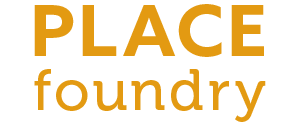The squeeze on the middle
Large-lot single-family homes and high-rise loft apartments dominant the landscape of American cities. The focus on these two forms of development is creating a desert in the middle that allows places to thrive.
Yet, restricting the supply of single-family homes or loft apartments is not the solution, nor should it be our focus.
We, as citizens, creators, strategists, and tinkerers, intend to create places of belonging. But too often, our practices lead to more squeezing of the middle rather than expanding opportunity for all.
Ecosystem mapping allows us to continually evaluate our practices and patterns that either enable magnetic destinations or keep communities frozen in place.
The work of placemaking requires knowing how to maximize our land use and ensure we serve all existing and new beneficiaries. For example, suppose we aim to build for a broad range of individuals, families, entrepreneurs, and Fortune 500 companies.
In that case, we adjust the levers of development to meet the needs of each person.
Diverse neighborhoods encourage the construction of 600 square foot accessory dwelling units alongside 3,000 square foot four-plex units and 3,000 square foot single-family homes.
While single-family and loft apartment zoning has been a cog in the racial and economic segregation of cities and regions, both have a place in the diverse, equitable, and inclusive city.
Placemakers push on the organizing principles and the fundamentals. The fundamentals of zoning, land use, and assessments are essential levers in shaping neighborhoods and cities.
Adjusting these regularity dials, reducing poverty, empowering the middle class, and growing wealth increase the chances of prosperity for all.
